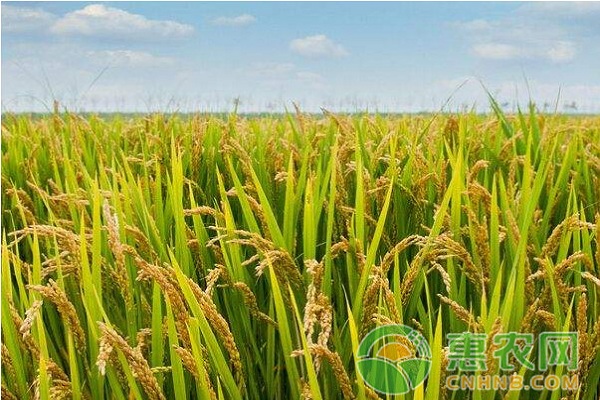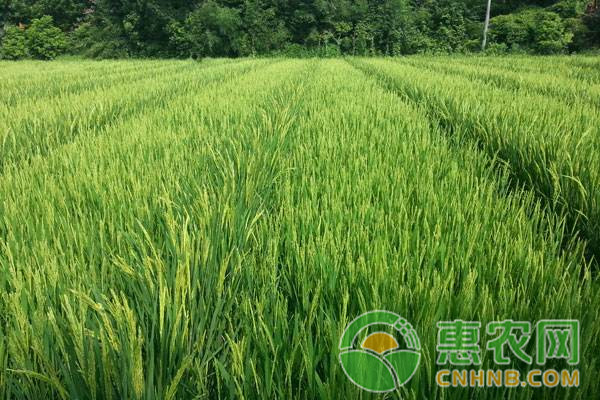If the prevention and treatment of pests and diseases are not timely, the problem of pests and diseases will occur frequently, which greatly increases the cost of pest control, and the control effect is not very obvious. The following is a summary of the comprehensive prevention and control technology for rice and field pests and diseases.

1 Rice pest control
1.1 Rice leaf roller
The newly hatched larvae feed on the heart leaves, and there are needle-like small spots, which are also harmful in the leaf sheath. As the age of the insects increases, the leaves are adorned with the leaf edges on both sides of the rice leaf, and the longitudinally rolled leaves become cylindrical insects, and the larvae hide their bodies. The inner scorpion eats the mesophyll, leaving the skin with white streaks. In severe cases, the worms are full of insects and the white leaves are full of fields. In the pregnancy and heading period, the damage was the greatest.
1.1.1 Agricultural control technology
Rice should ensure the time and extent of field irrigation during the field, and secondly, use the method of laying a field to maintain the sustainability of the fertilizer, so as to prevent the problem of greedy rice in the greatest extent.
1.1.2 Drug control technology
At present, the following drugs can be selected for pest control in the pharmaceutical market, but it must be configured according to the severity of the disease: 4000 times Vikda emulsion, 5000 times Dingkang soluble granules, 6000 times Weiyuan high-methyl micro-salt microemulsion, 1500 Double emulsified oil reagent, sprayed, sprayed evenly.
1.2 Chilo suppressalis
Chilo suppressalis is one of the most harmful pests to rice in China's planting history.
1.2.1 Agricultural control technology
Treat the weeds in the field, treat the straw before the larva grows, or spray the insects on the straw piles. When planting, select the field with less insect source or dry land to use for planting. After harvesting, the rice should be timely. Replace the site and carry out the sun exposure method to kill most of the larvae in the rice. The winter ploughing winter species should be prepared after the rice harvesting process is completed, and should be 15 to 20 before the second year of rice transplanting. Deep-water irrigation is used to deepen and effectively eliminate the eggs of the mites.
1.2.2 Drug prevention technology
Understanding the physiological cycle of Chilo suppressalis and controlling the time of medication is a key factor in drug control in the field. Normally, it should be administered between July 11 and 25 of each year. At the time of sealing, the drug sealing method is adopted. From June 24 to July 1 every year, it is the initial stage of the emergence of Chilo suppressalis. The drug is sealed with 80% dichlorvos 50 times. The dosage should be controlled. Between 15~30mL per cubic meter. A drug-filled rod was inserted at 20 to 50 cm in the grass to kill the newly emerged adult.
2 Rice disease prevention
2.1 Blight
Bacterial blight mainly destroys the rhizome of rice. It begins with an oval or irregular dark sore. Rice begins to dry during the day when the disease begins. It is normal at night, and the affected part has regular depression and atrophy. The color gradually deepens and suffers. The parts gradually became larger and dried up to one week, and some of the damaged rice died when they only saw dark brown sores. In order to distinguish from the disease, it is possible to observe whether flocculation occurs, the speed of progression of the disease, and the like.

2.1.1 Agricultural control technology
Before putting into production, it should be checked whether it is using disease-free and fertile new soil. If it is produced on the previous seedbed, the soil must be treated. The fertilizer must be spread evenly and fertilized. It should not be too thick when covering the soil. According to the temperature of the day, the weather conditions, and the dryness of the soil, sprinkle water, reduce the number of sprinkling and sprinkle water in the morning. When the soil moisture is high, sprinkle some dry soil for soil dehumidification. While doing soil-related work, you should get more sun and keep it ventilated.
2.1.2 Drug prevention and treatment technology
The drug prevention and treatment work should be carried out at the initial stage of the disease. The drug use interval is six to nine days. In the drug store, it is enough to buy and allocate 25% to 30% of the methyl carbendazim drug 800 times solution, and 35% to 40% of the arsenic drug. 1000 times solution, 70%~80% chlorothalonil drug 600 times solution, or 15%~25% methyl chlorophosphorus emulsifiable oil 1200 times solution, using spraying method for prevention and treatment. If the sputum disease and the blight are mixed, 71.5%~72.5% of the mildew drug 800 times solution can be mixed with 45%~55% thiram double drug 800 times liquid spray, and the average mixed drug is used per seedling. 2~3 L.
2.2 Rice smut
Rice false smut, commonly known as "high yield fruit", is also known as smut, variegated, powdery mildew. The site of the disease is only in the panicle of rice, which is harmful to the grain. When the disease occurs, the grain splits into a pale yellow block, that is, spore. The prevention and treatment of this disease is as follows:

2.2.1 Agricultural control technology
Before planting, the drug should be used for seed dressing, which can dispel the pests, prevent bacterial infection, increase the chance of seed germination, and strengthen the intensity of air extraction and regulate the swelling function. Before planting, it should be checked whether a disease-free, fertile new soil is used. If it is produced on a previous land, the soil must be treated. Fertilizer must be decomposed and spread evenly. The amount of irrigation must be small and diligent. Try to avoid using nitrogen fertilizer, and avoid excessive nitrogen fertilizer, too late, so as to avoid late maturity and disease. Spraying Zhuangsuiling, strengthen crop physiology, improve pollination, insemination, grout quality, and increase ear weight.
2.2.2 Rice smut disease prevention technology
Purchase and use 1.5%~2.5% formalin or 0.5% copper sulfate in the drug market, soak seeds for 3~5 hours, then suffocate for 11~13 hours, rinse with rinsing water. Before heading, use 17%~19% chlorhexone powder 1.5~2 kg or 13%~15% copper copper drug 2.5 kg ç¨»ä¸°çµ 0.2 kg or 4%~8% 井 霉 æ¯ per 667 m2 at the end of rice booting stage. 0.1 g of the drug is sprayed with 50 L of water. When the drug is administered, tricyclazole or carbendazim can be added simultaneously to prevent the ear mites.
To sum up, in the field of rice, it is necessary to prevent pests and diseases, strengthen the investigation of the disease, and follow the principle of timely management of pests and diseases. Only by strengthening the daily details of work, and using scientific and effective methods for prevention and control, can reduce the probability of victimization, reduce the probability of disease and the speed of disaster expansion, and minimize the damage caused by pests and diseases to rice production. To ensure the income of planters and promote the sustainable development of rice production.
Guiding Catheter,Diagnostic Catheter,Cardiology Angiographic Guiding Catheter,Guiding Catheter for Intervention Surgery
Anesthesia Medical Co., Ltd. , https://www.trustfulmedical.com